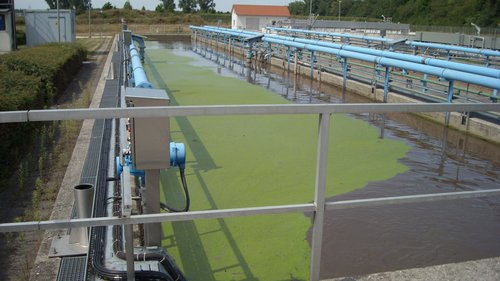Thermal phosphorus recycling from sewage sludge

The Sewage Sludge Ordinance stipulates that phosphorus recovery must take place in sewage treatment plants with more than 100,000 p.e. from 2029 and with more than 50,000 p.e. from 2031.
The company Grenzebach BSH GmbH (Bad Hersfeld) is currently developing a thermal process for P-recovery from sewage sludge. It has been shown that the effectiveness of the process depends, among other things, on the iron content of the sewage sludge. Since iron has a high affinity for the formation of ferrophosphorus and binds the phosphorus, a high iron content in the sewage sludge can be associated with high phosphorus losses in this thermal process.
The iron content depends on the phosphorus elimination
The iron content in sewage sludge is strongly influenced by the type of P-elimination agent used in the sewage treatment plant. For this reason, Grenzebach commissioned bifa Umweltinstitut GmbH to conduct a survey of Hessian and Bavarian sewage treatment plants (> 50,000 p.e.) on the use of precipitants and P recovery strategies.
Of the 132 WWTPs participating in the survey, 41 use iron-based and 8 aluminium-based precipitants. 78 use mixtures or several precipitants. Regarding the P-strategy, 51 stated that they are still waiting for the current developments, 11 are thinking of building a plant in their own municipality, 19 are planning a special purpose association or have already founded one. 49 said they would outsource phosphorus recycling.
![[Translate to Englisch:] Placeholder](/fileadmin/_processed_/f/4/csm_Header_Presse_d565a61df7.jpg)